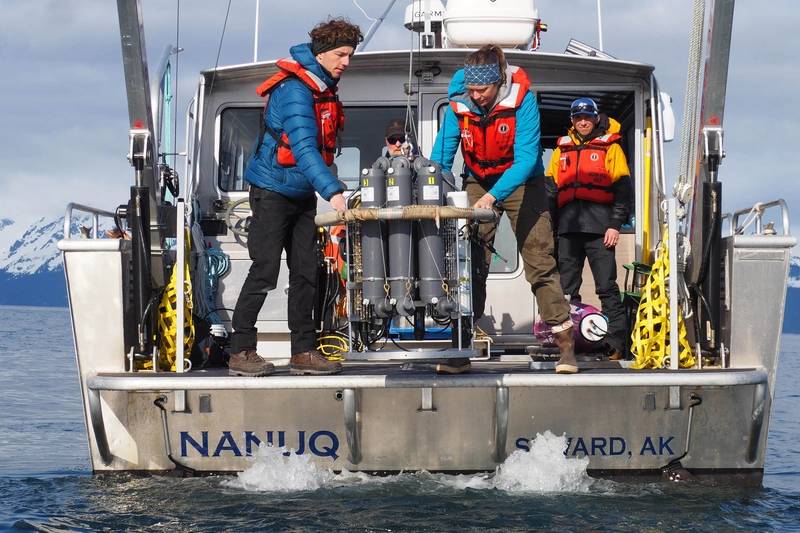Researchers at the University of Alaska Fairbanks (UAF) and their industry partners have advanced the technology available to measure carbon dioxide in the ocean.
Their design, published in the journal Ocean Science, is now available to the scientific community.
During the past six years, a team from the UAF International Arctic Research Center and private companies developed a way to equip an unmanned, underwater vehicle called a Seaglider with a sensor that monitors carbon dioxide. The sensor communicates with a satellite to provide high spatial and temporal resolution data for weeks at a time.
IARC’s industry partners — Advanced Offshore Operations and 4H JENA Engineering — made the Contros HydroC sensor lighter and more compact so it would fit the Seaglider.
The sensor is still larger and demands more power than those typically used on a Seaglider, so the team had to carefully account for its effects upon buoyancy and adjust by using weights and 3D-printed materials.
Carbon dioxide, released when humans burn coal, oil and gas, is called a greenhouse gas because it traps heat in the atmosphere and contributes to climate warming. The ocean has slowed the effects of climate change by absorbing about a third of carbon dioxide emissions since the industrial revolution began. But that has led to ocean acidification.
After their technological success with the carbon dioxide sensor, the team decided to monitor a different greenhouse gas — methane. They equipped a Seaglider with a methane sensor, and the addition is now in the testing phase.
Methane doesn’t stay in the environment as long as carbon dioxide, but it traps more heat. Humans produce roughly 60% of methane emissions through agriculture, waste and fossil fuel industries. The rest occurs naturally, including in the ocean where it bubbles to the surface from the deepest parts of the Earth.

